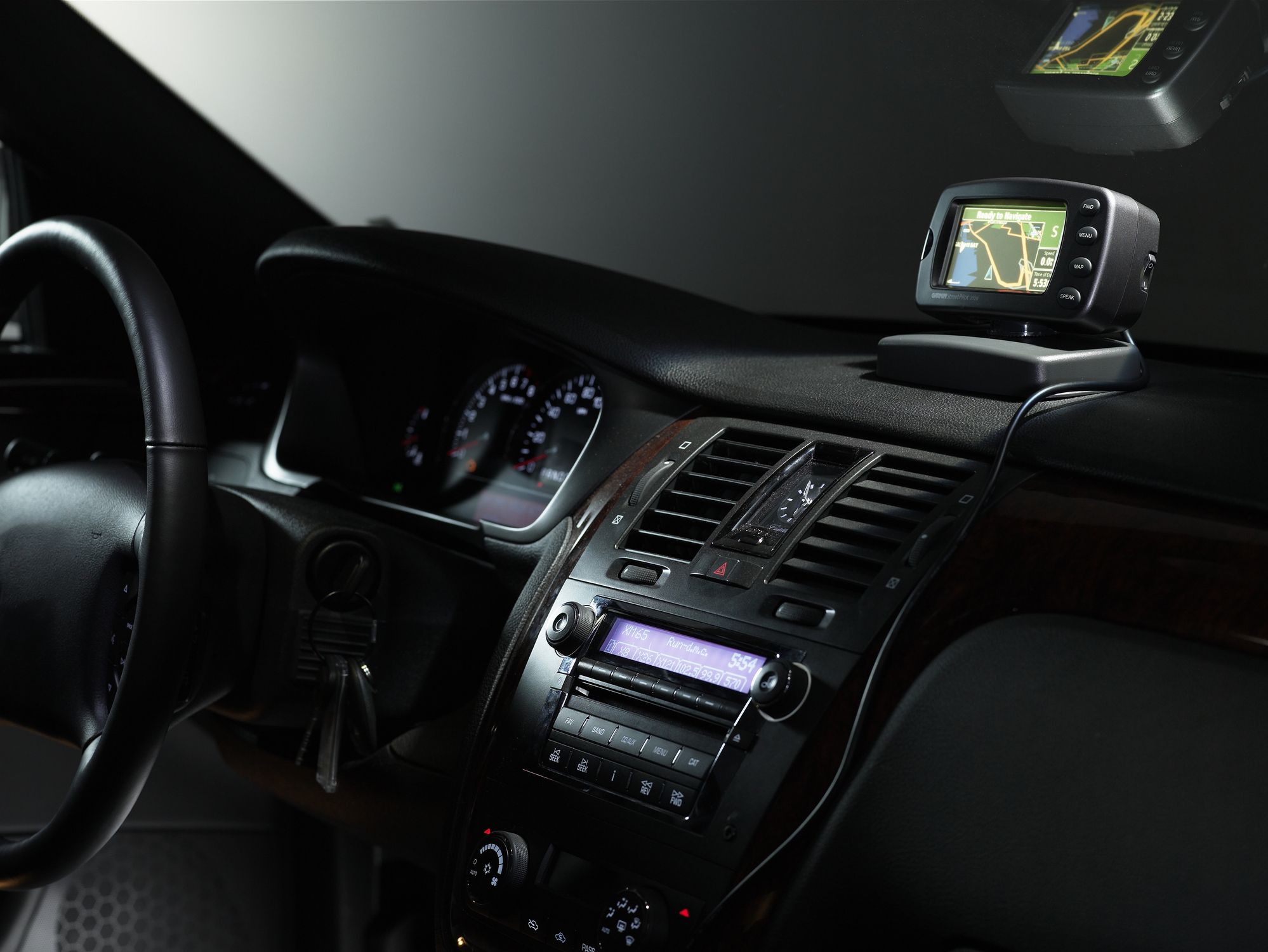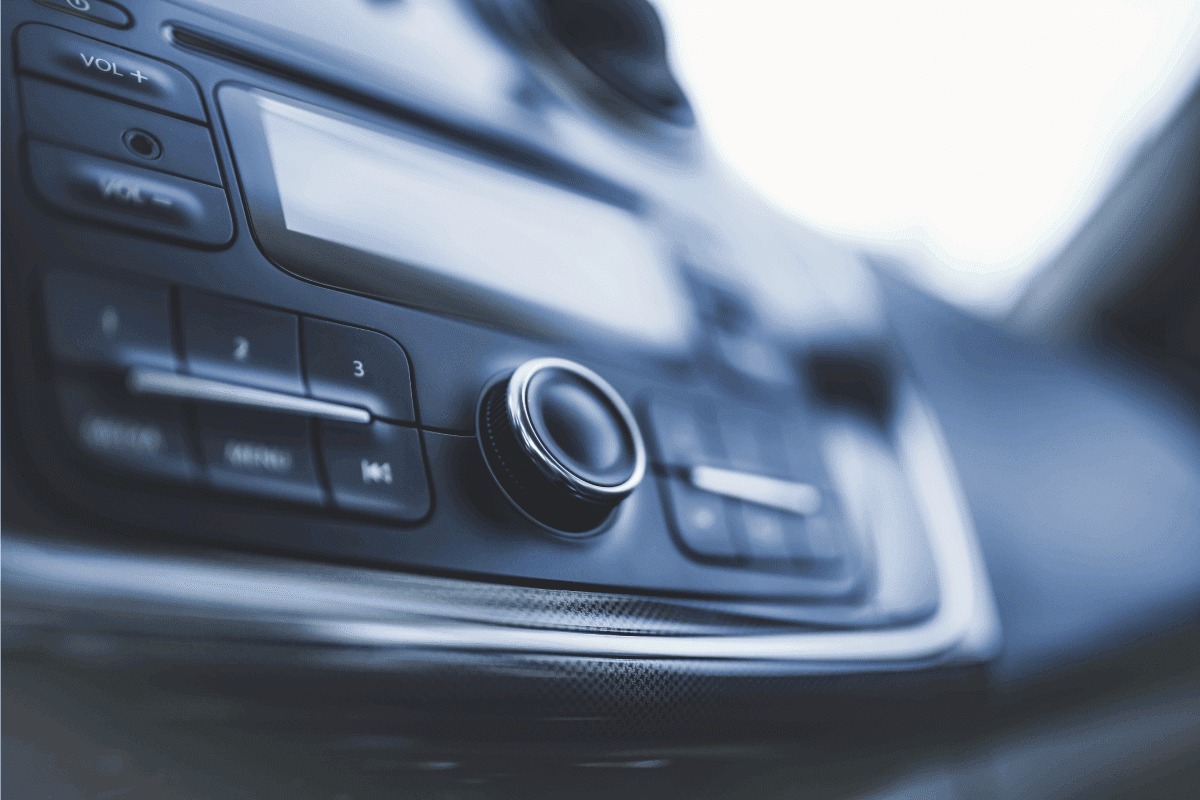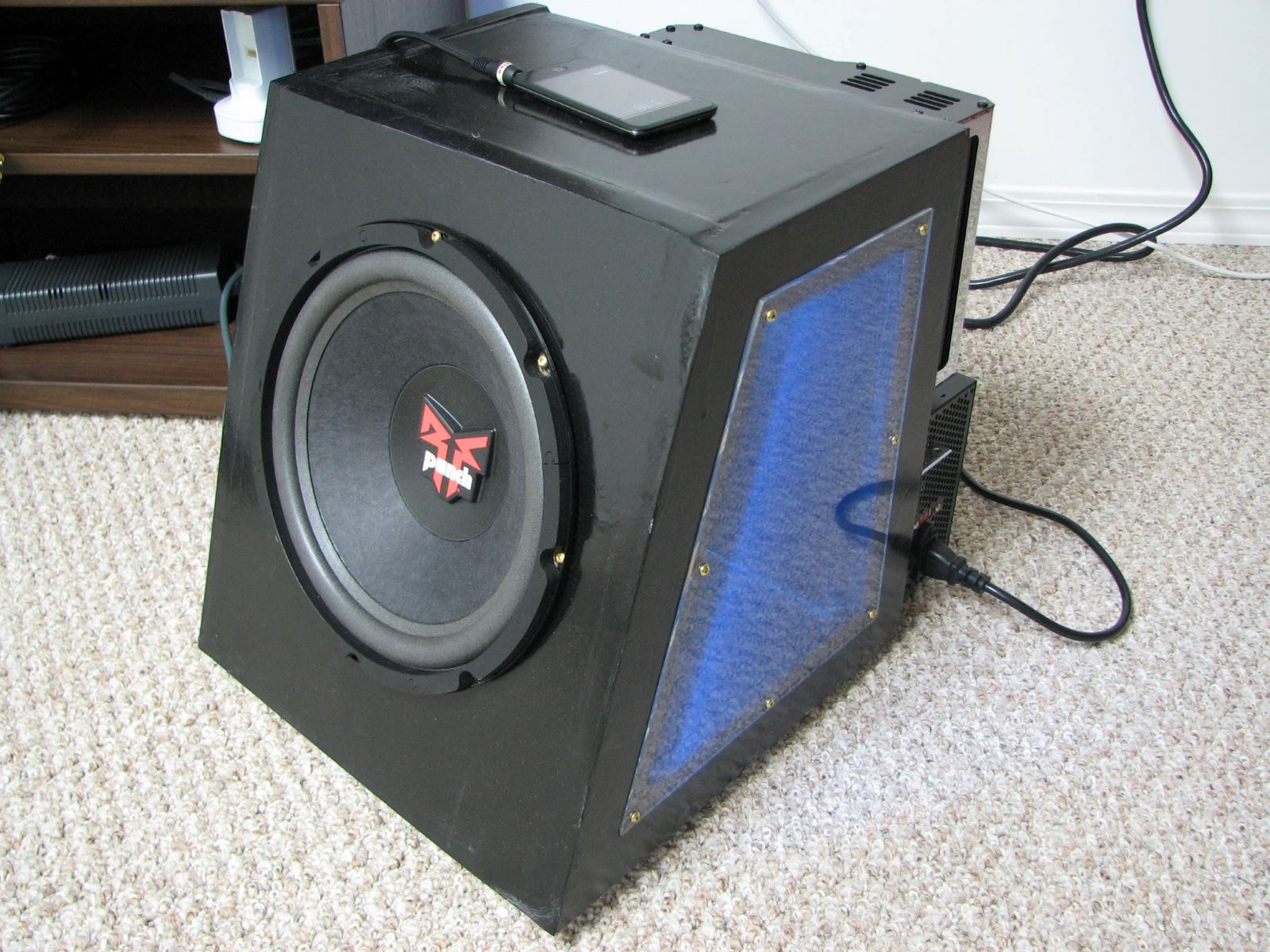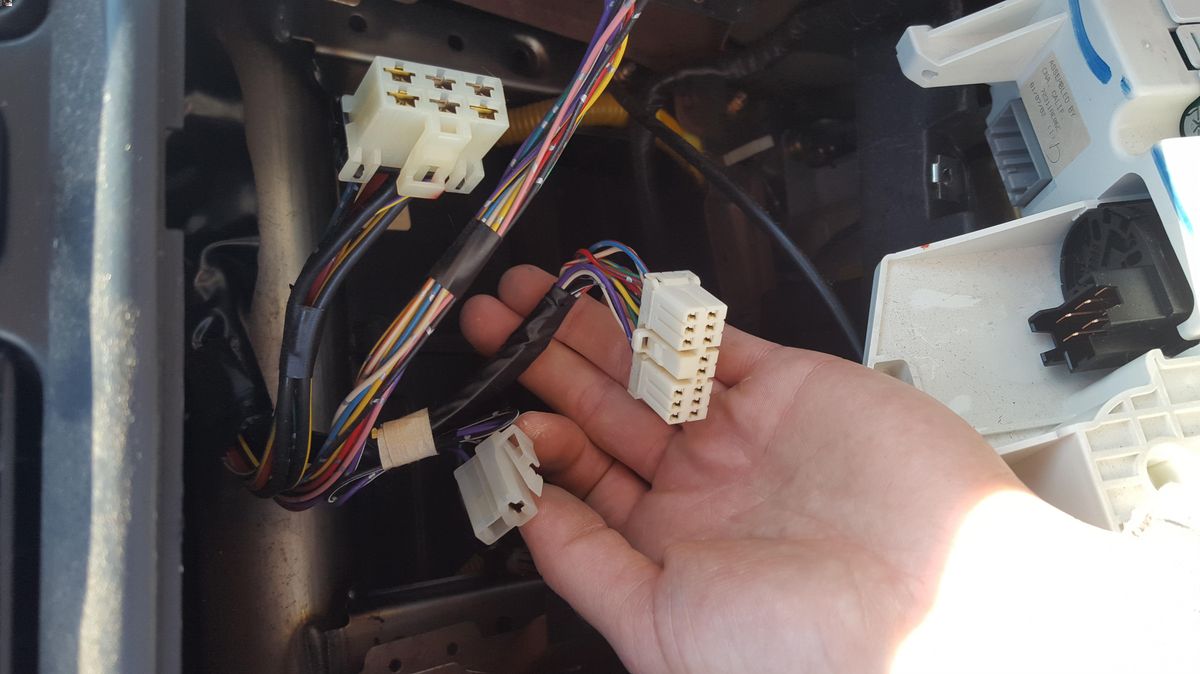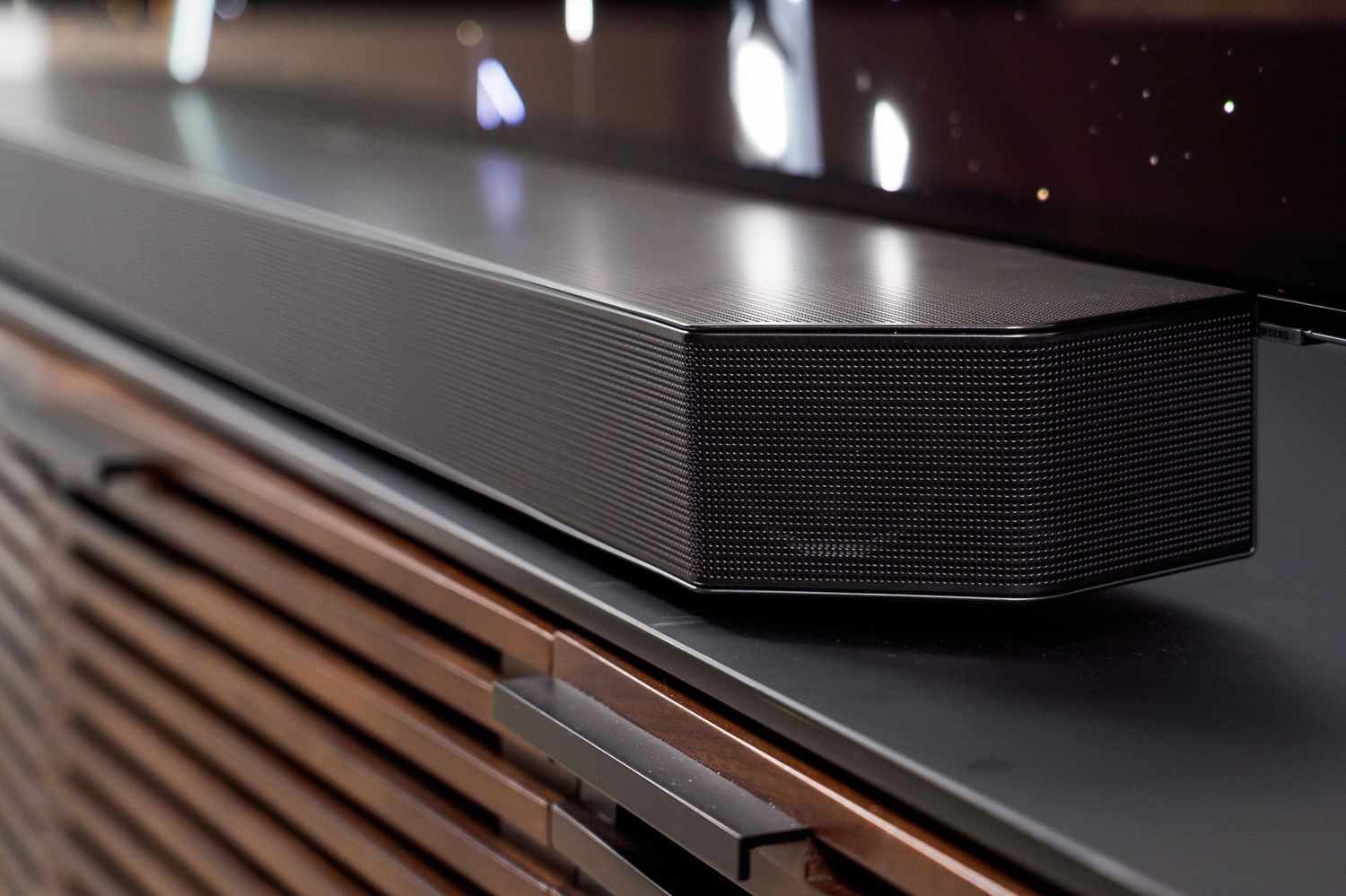Home>Devices & Equipment>Subwoofer>How To Get More Bass In My Car Without A Subwoofer


Subwoofer
How To Get More Bass In My Car Without A Subwoofer
Modified: February 18, 2024
Learn effective techniques to enhance the bass in your car audio system without the need for a subwoofer. Discover tips and tricks to maximize the low-end frequencies for an immersive audio experience.
(Many of the links in this article redirect to a specific reviewed product. Your purchase of these products through affiliate links helps to generate commission for AudioLover.com, at no extra cost. Learn more)
Table of Contents
Introduction
Welcome to the world of car audio enthusiasts! If you’re looking to enhance the bass in your car audio system but don’t want to invest in a subwoofer just yet, you’re in luck. There are several tips and tricks you can use to get more bass without a subwoofer. Whether you’re on a tight budget or simply want to explore alternative options, this article will guide you through various techniques to achieve richer and more powerful bass in your car.
Before we dive into the methods, let’s quickly discuss why bass is an essential component of any car audio system. Bass frequencies add depth, impact, and a more immersive listening experience. They provide the foundation for the music, enhancing the overall audio quality. While subwoofers are popular for their ability to reproduce low-frequency sounds, there are alternative approaches to achieve satisfying bass response without the need for an additional subwoofer.
In this article, we’ll explore various techniques to optimize your current setup and maximize the bass output of your car speakers. From proper speaker placement to adjusting equalizer settings and upgrading factory speakers, we’ll cover it all. So, sit back, buckle up, and get ready to boost the bass in your car audio system without a subwoofer!
Understanding Bass in Car Audio Systems
Before we explore how to enhance the bass in your car without a subwoofer, it’s important to understand the role of bass in car audio systems. Bass refers to low-frequency sound waves typically ranging from 20 Hz to 250 Hz. These frequencies add depth, impact, and a sense of realism to the audio playback.
In a car audio system, bass is reproduced by speakers, including the subwoofer, dedicated to handling low-frequency sounds. However, if you don’t have a subwoofer or are looking for alternative ways to improve bass response, there are still techniques you can employ.
It’s worth noting that while alternative methods can enhance bass, they may not replicate the same level of performance as a dedicated subwoofer. Subwoofers are specifically designed to reproduce deep bass notes with precision and power. But if you’re on a budget or prefer to explore other options before investing in a subwoofer, the following techniques can help you achieve a more satisfying bass experience.
Keep in mind that the success of these techniques also depends on the existing audio system’s capabilities and the quality of the speakers installed in your car. Now, let’s move on to the various methods you can employ to get more bass in your car audio system without a subwoofer.
Optimizing Speaker Placement
One of the key factors that can significantly impact bass performance in your car audio system is the placement of your existing speakers. Proper speaker placement can help maximize the bass response and improve overall sound quality without the need for a subwoofer.
Here are a few tips to optimize speaker placement:
- Position the speakers correctly: Ensure that your car speakers are positioned in a way that allows them to produce optimal bass response. This typically involves placing them in the front corners of the car’s interior. This placement helps to utilize the surrounding surfaces, such as the windshield and dashboard, to enhance and amplify the bass frequencies.
- Angle the speakers towards the listener: Angle the speakers slightly towards the driver and passenger seats to direct the sound waves towards you. This helps to improve the localization of bass frequencies and creates a more immersive listening experience.
- Utilize kick panels or door panels: Depending on the design of your car’s interior, you can consider installing kick panels or door panels that are specifically designed to house speakers. These panels can provide better enclosure and support for the speakers, resulting in improved bass response.
- Consider factory speaker upgrades: If your car’s factory speakers are not producing satisfactory bass, upgrading them to aftermarket speakers can make a noticeable difference. Look for speakers with good low-frequency response and power-handling capabilities.
Remember, experimenting with different speaker placements and angles can help you find the sweet spot for optimal bass reproduction. It may take a bit of trial and error to find the perfect setup, but the effort is well worth it.
Next, we’ll explore another method to enhance bass response without a subwoofer—adjusting equalizer settings.
Adjusting Equalizer Settings
Equalizer settings play a vital role in shaping the sound quality of your car audio system, including the bass response. By making adjustments to the equalizer, you can fine-tune the frequencies and achieve a more balanced and pronounced bass without the need for a subwoofer.
Here are some tips for adjusting the equalizer settings:
- Boost the low frequencies: Increase the level or “boost” the low-frequency bands on your car’s equalizer. These bands are usually labeled as “Bass” or “Low.” By increasing these frequencies, you can emphasize the bass response and give it a more prominent presence in the overall sound mix.
- Adjust the mid-range frequencies: Besides boosting the low frequencies, make minor adjustments to the mid-range frequencies as well. This can help maintain a balance between the bass and other elements of the audio spectrum.
- Experiment with different EQ presets: Many car audio systems offer pre-defined equalizer presets, such as “Rock,” “Pop,” or “Hip Hop.” Try out these presets and see if any of them enhance the bass to your liking. If not, continue fine-tuning the individual frequency bands.
- Pay attention to the Q-factor: The Q-factor, or bandwidth, determines the range of frequencies affected by your equalizer adjustments. Adjusting the Q-factor can help pinpoint specific bass frequencies and make the adjustments more precise for your desired bass response.
Remember to take a systematic approach when adjusting the equalizer settings. Start with subtle changes and listen to how each adjustment affects the bass response. Continuously fine-tune until you achieve the desired balance and impact.
Next, we’ll explore how sound deadening can improve bass performance in your car audio system.
Enhancing Bass with Sound Deadening
Sound deadening is a technique that involves reducing external noise and vibrations, which can have a significant impact on bass performance in your car audio system. By minimizing unwanted noises and vibrations, you can improve the clarity and depth of the bass frequencies.
Here’s how you can enhance bass with sound deadening:
- Install sound deadening material: Apply sound deadening material, such as mass-loaded vinyl or butyl rubber sheets, to the doors, floor, and trunk of your car. These materials help dampen vibrations and reduce road noise, allowing the bass frequencies to resonate more effectively.
- Seal any gaps and openings: Inspect your car’s interior for any gaps, cracks, or openings that may allow air leaks or noise intrusion. Use weatherstripping tape or foam gaskets to seal these gaps. This can prevent bass loss and maintain better acoustic isolation within the car.
- Focus on the speaker enclosures: Ensure that the speaker enclosures are properly sealed and isolated from the car’s interior. Loose or poorly sealed enclosures can lead to bass distortion and reduce overall sound quality. Use foam tape or rubber gaskets to create a tight seal.
- Consider adding additional insulation: If you want to take sound deadening to the next level, you can also add additional insulation to the car’s interior. This includes installing soundproofing foam or using specialized products designed to absorb and reduce noise within the cabin.
By implementing sound deadening techniques, you can minimize external disturbances and create an optimal acoustic environment for the bass frequencies to shine. The improved bass response will not only enhance your listening experience but also provide a quieter and more enjoyable ride.
Next, we’ll look at the option of upgrading factory speakers to achieve better bass performance.
Upgrading Factory Speakers
One of the most effective ways to enhance bass in your car audio system without a subwoofer is by upgrading your factory speakers. Factory-installed speakers are often limited in their bass response and power, which can leave your audio lacking in depth and impact.
Here’s how upgrading factory speakers can improve bass performance:
- Choose speakers with better low-frequency response: Look for aftermarket speakers that are specifically designed to reproduce deep bass notes. Pay attention to the frequency response range and look for speakers that can reach lower frequencies, ideally below 100 Hz.
- Consider component speakers: Component speakers consist of separate woofers and tweeters, providing better sound separation and imaging. This can lead to improved bass reproduction and overall audio quality.
- Check for power-handling capabilities: Upgraded speakers should be able to handle more power than your factory speakers. Higher power handling allows for better control and accuracy in reproducing bass frequencies.
- Ensure proper installation: Properly install and secure the new speakers to prevent any rattling or unwanted vibrations. Also, pay attention to the speaker enclosures and make sure they are properly sealed for optimal bass performance.
Upgrading factory speakers can significantly enhance the bass response of your car audio system. The new speakers will have improved construction and materials that allow for better low-frequency reproduction, resulting in a more satisfying listening experience.
It’s important to note that while upgrading factory speakers can improve bass performance, it may have limitations based on your car’s audio system and available power. If you’re looking for more powerful and precise bass, you may still consider adding an amplifier or other bass enhancement devices, which we’ll discuss in the next section.
Adding an Amplifier
If you’re looking for a significant boost in bass performance in your car audio system without a subwoofer, adding an amplifier can make a noticeable difference. An amplifier provides more power to your speakers, allowing them to reproduce bass frequencies with greater clarity and impact.
Here’s how adding an amplifier can enhance bass:
- Increased power: An amplifier delivers more power to your speakers, enabling them to handle lower frequencies more effectively. This increased power allows for tighter bass response and greater dynamic range.
- Better control: Amplifiers provide better control over the speakers’ movement, allowing them to accurately reproduce bass notes without distortion or loss of detail. This results in more precise and punchy bass performance.
- Improved signal-to-noise ratio: Amplifiers typically have a higher signal-to-noise ratio than factory head units. This means they can amplify the audio signal while minimizing background noise, resulting in cleaner and more defined bass.
- Ability to use low-pass filters: An amplifier equipped with a low-pass filter allows you to send only the lower frequencies to your speakers, focusing on the bass output. This helps eliminate unwanted high-frequency signals, maximizing the impact of the bass frequencies.
When adding an amplifier, it’s crucial to ensure it is compatible with your car’s electrical system and speakers. Opt for an amplifier that matches the power requirements of your speakers and provides enough channels for optimal configuration.
Remember to correctly install and wire the amplifier to prevent any electrical issues or interference. Additionally, tune the amplifier settings and gain control to match your speakers and desired bass response.
Adding an amplifier can significantly improve the bass performance in your car audio system. Coupled with other techniques, such as speaker placement and equalizer adjustments, it can create a well-rounded and powerful bass experience without the need for a separate subwoofer.
Next, let’s explore the option of installing bass boosters or bass enhancers as an alternative way to enhance bass in your car audio system.
Installing Bass Boosters or Bass Enhancers
If you want to enhance the bass in your car audio system without investing in a subwoofer, you can consider installing bass boosters or bass enhancers. These devices are designed to amplify and enhance the low-frequency content of your audio, providing a more pronounced and impactful bass response.
Here’s how bass boosters or bass enhancers can improve bass:
- Adjustable bass levels: Bass boosters or enhancers often come with adjustable settings, allowing you to customize the bass levels to your preference. You can increase the bass output to create a more prominent and powerful low-end presence.
- Signal processing: These devices use signal processing techniques to analyze and modify the audio signal, emphasizing the lower frequencies. This can help overcome the limitations of your factory speakers and produce a more satisfying bass experience.
- Bass restoration: Some bass boosters or enhancers also provide bass restoration capabilities. This means they can restore and enhance bass frequencies that may be lost during the audio compression process, resulting in a fuller and more impactful low-end sound.
- Simplicity and ease of installation: Bass boosters or enhancers are relatively simple to install and use. They usually connect between your car’s head unit and the amplifier or speakers, requiring minimal wiring and adjustments.
When installing a bass booster or enhancer, it’s essential to follow the manufacturer’s instructions and recommendations. This ensures proper integration with your car audio system and prevents any potential damage or interference.
Keep in mind that while bass boosters or enhancers can improve bass performance, they may have limitations based on your existing speakers and audio system. It’s always recommended to combine their use with other techniques, such as speaker placement and equalizer adjustments, to achieve the best possible bass experience.
Now that we’ve explored bass boosters and enhancers, let’s discuss the use of sound processors in the next section to further enhance your car’s bass performance.
Using Sound Processors
Sound processors are powerful tools that can significantly enhance the bass performance in your car audio system without the need for a subwoofer. These devices offer advanced audio processing capabilities, allowing you to fine-tune and optimize the bass response for a more customized and immersive listening experience.
Here’s how sound processors can enhance bass:
- Equalization: Sound processors typically feature advanced equalizer settings, including parametric or graphic equalizers. These allow you to precisely adjust the bass frequencies to match your preferences and optimize the sound output.
- Time alignment: Sound processors often include time alignment features, which help align the arrival time of sound from each speaker. By properly aligning the audio signals, you can improve bass response, imaging, and sound staging, resulting in a more well-defined and immersive bass experience.
- Crossover control: Sound processors offer control over crossover settings, allowing you to separate and direct specific frequency ranges to different speakers. This ensures that the bass frequencies are accurately sent to the appropriate speakers, enhancing the overall bass performance.
- Signal restoration: Some sound processors have built-in signal restoration capabilities. These features analyze and enhance the audio signal, restoring any lost or compromised bass frequencies, and ensuring a richer and more detailed bass response.
Using a sound processor may require professional installation and calibration to achieve optimal results. It’s recommended to consult with audio professionals or seek guidelines from the sound processor manufacturer to ensure proper integration with your car audio system.
Sound processors offer a high level of customization and control over your car’s audio system. When combined with other techniques, such as speaker placement, upgrading factory speakers, and adjusting equalizer settings, they can help you achieve the desired bass performance without the need for a subwoofer.
Now that we’ve explored various methods to enhance bass without a subwoofer, let’s summarize and conclude our discussion.
Conclusion
Enhancing the bass in your car audio system without a subwoofer is indeed possible with the right techniques and approaches. By implementing strategies such as optimizing speaker placement, adjusting equalizer settings, sound deadening, upgrading factory speakers, adding an amplifier, installing bass boosters or enhancers, and using sound processors, you can achieve a more satisfying and immersive bass experience.
While each technique offers its own benefits, it’s important to remember that the success of enhancing bass without a subwoofer greatly depends on the existing capabilities of your car audio system and the quality of your speakers. It’s always recommended to start with the techniques that are within your budget and expertise, and gradually explore different options to determine the best combination for your specific needs.
Additionally, keep in mind that the key to achieving the best bass performance lies in finding the right balance between all the elements. Experimentation, tuning, and fine-tuning are essential to achieve the optimal sound signature that suits your preferences.
Lastly, it’s worth mentioning that while these techniques can enhance the bass response, they may not replicate the same level of performance as a dedicated subwoofer. Subwoofers, with their specialized design and construction, excel in reproducing low frequencies with precision and power. If you’re seeking the ultimate bass experience, investing in a subwoofer may be the ideal solution.
In conclusion, by optimizing your speaker placement, adjusting equalizer settings, adding sound deadening, upgrading speakers, installing an amplifier, using bass boosters or enhancers, and employing sound processors, you can significantly improve the bass performance in your car audio system. Explore these methods, experiment with different settings, and fine-tune your setup to achieve the perfect bass experience that fits your preferences and budget.



